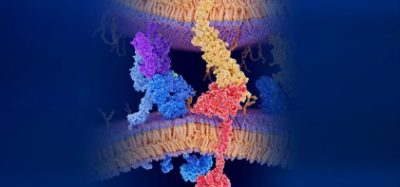Improving treatment response to KRAS inhibitors
Posted: 20 November 2023 | Drug Target Review | No comments yet
Eliminating AT1-like cells in experimental models has shown potential to improve KRAS inhibitor treatment for lung adenocarcinoma.


Memorial Sloan Kettering Cancer Center (MSK) scientists have gained a new understanding of lung cancer cells’ ‘memories’ which suggests a new strategy for improving treatment. Research from the lab of cancer biologist Dr Tuomas Tammela demonstrates that some lung cancer cells keep a ‘memory’ of the healthy cell where they originated from. This could be exploited to make KRAS inhibition more effective.
The study focused on lung adenocarcinoma, a type of non-small cell lung cancer that is the most frequent type of lung cancer in the US and responsible for seven percent of all cancer deaths. This cancer is often driven by mutations in the KRAS gene.
The study’s co-first author Zhuxuan “Zoe” Li, a doctoral student in the Tammela lab at MSK’s Sloan Kettering Institute, said: “For a long time, cancer driving KRAS proteins were considered ‘undruggable.’” She continued: “Within the last few years, however, the U.S. Food and Drug Administration approved the first KRAS inhibitors, with quite a few more in clinical trials. But they don’t work for everyone, and most patients’ cancers eventually acquire resistance to the drugs and come back.”
The team, co-led by Dr Xueqian Zhuang, discovered valuable information about lung cancer cells that remain after treatment with a KRAS inhibitor. They suggest that separately targeting these cells alongside treatment with a KRAS inhibitor could help prevent recurrence.
AT1 and AT2 cells
Oxygen is absorbed into the lungs, and carbon dioxide released via air sacs called alveoli. The lining of the alveoli is made from two different types of cells: alveolar type 1 (AT1) and alveolar type 2 (AT2).
AT1 cells are long and thin, with a large surface to facilitate gas exchange between the lungs and the bloodstream, whilst AT2 cells, secrete compounds that are crucial for the health and function of the lungs. They also aid in maintaining and repairing the lungs by dividing to create replacement AT1 cells. Dr Tammela described them as “stem cells with a day job.” Lung cancer cells usually develop from AT2 cells. These cancer cells adopt some ‘remembered’ properties of the AT1 cells that AT2 cells differentiate into when they are playing their stem cell role. These are known as AT1-like cells.
Improving response to KRAS inhibition
KRAS has an essential role in regulating cell growth and division in healthy cells. However, when the gene becomes mutated, it can lead to excessive cell proliferation.
KRAS inhibitors can switch off this explosive growth, deteriorating tumours, but they still leave behind cancer cells that are not sensitive to the drug. This gives the cancer the opportunity to develop new mutations to resist the drugs’ effects.
The scientists used genetically engineered mouse models, mice implanted with patient-derived tumours and tumour samples from patients to study determine the mechanisms of this resistance.
They found that the cancer cells that remained after treatment were AT1-like cells, and they have the capacity to reignite the cancer’s runaway growth.
“Importantly, we found that if you get rid of these AT1-like cells, it greatly improves the treatment response to KRAS inhibitors,” Dr Tammela said.
Eliminating those cells in experimental models is fairly easy, but doing so in the clinic will require further research. Dr Tammela explained: “Now that we’ve done these proof-of-concept experiments, the next step would be to find surface proteins that are unique to these AT1-like cells and then develop a therapeutic that can bind to them and kill them.”
The study was published in Cancer Discovery.
Related topics
Cancer research, Drug Development, Drug Targets
Related conditions
Lung adenocarcinoma (LAUD)
Related organisations
Memorial Sloan Kettering Cancer Center (MSK), MSK’s Sloan Kettering Institute








